PSD2 and Open Banking: innovative payment solutions
The Payment Service Directive, introduced by the European Commission, aims to lower high domestic market barriers in financial services; it has forced banks to open up and allow the entry of new payment service intermediaries.
The directive represents an opportunity for all operators: banking incumbents, new Fintechs and BigTechs, and last but not least, to operators from many different industries, such as Insurance, Retail, Multiutility, Oil & Gas, e-commerce and mobility.Becoming an e-Money or Payment Institution, or an accredited third-party- provider (TPP), allows you to guarantee customers simplified and loyalty-building experiences, while saving on collection costs and making internal administration and treasury processes more efficient.
Talk to our experts
Contact us
We help you reposition yourself in the new ecosystem
Over 90% of PSD2 transactions in Italy are based on components of TAS Global Payment Platform (GPP). Unlike other PSD2 service providers, TAS is a totally independent entity, , we are not in competition with customers.
Our GPP includes 100% of the components, layers and integrations required to operate as an e-Money Institution, Payment Institution, PISP or AISP. It is a highly modular and customisable platform. GPP is offered as a cloud service or an on-premises solution.
The deliberately “technology-neutral ” nature of the PSD2 regulation has favoured the proliferation of standards and “dialects” in the dialogue between Banks and Third Parties. However, with TAS you can rely on a platform that guarantees interoperability with Open APIs adopted by banks and simple integration of new services.
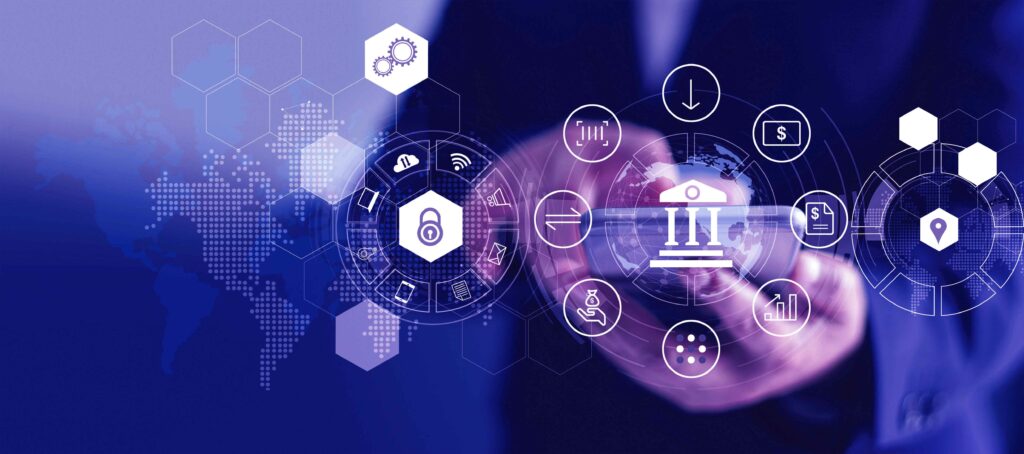
With the PSD2 regulatory framework, you can now launch your own payment system, obtaining significant
savings on purchases of goods or services and develop new revenue streams from insights into cardholder spending habits – by analysing patterns and offering new tailor-made proposals.
We provide you with:
expert advice on regulatory issues
solid experience derived from a pivotal role in the Banks-Fintechs-Regulators ecosystem
middleware aimed at harmonising and standardising TPP-ASPSP interfaces
sandbox facilities to accelerate and go-live
end-to-end coverage of onboarding and multi-channel payment processes.
Manage customer positions seamlessly with our Light Core Banking
For new non-bank operators wanting to get the most out of the Open Banking and Finance era, we have created components to facilitate end-customer management.
- Registry: a multi-tenant module to register and configure all end-customers and their authorised points of interactions. It provides functions for insertion, search, modification and deletion of both legal and natural persons.
- Conditions: allows you to configure and manage fees and conditions applicable to customers, to group them into “fee sets”, and to set up application rules with real-time execution or parametric frequency.
- Payment accounts: this module can manage business, retail or technical accounts. It allows you to configure complex structures and implement hierarchically organised pools of accounts with master and slave accounts. There is an option to configure automatic cash pooling mechanisms among accounts.
TPP Enabler
A white-label solution to reduce the complexity of Open Banking interconnections
Harmoniser Hub
Harmonises and standardises account movements descriptions used by ASPSPs
SCA Manager
Simplifies integration with ASPSPs, removing the complexity of managing heterogeneous SCAs
eIDAS certificates
Manages the EIDAS certificates lifecycle for secure authentication of TPPs
TPP Enabler
TPP Enabler is a white-label solution dedicated to TPPs and aggregators, which offers easy “out-of-the-box” integration with a plurality of Open Banking API standards. It simplifies access to PSD2 services published by banks, thanks to its extremely flexible architecture and rich set of pre-certified interfaces to major Account Servicing Payment Service Providers (ASPSP) and Open Banking Gateways.
It offers an extensive Open API library and an advanced monitoring dashboard.
Harmoniser Hub
This component meets the need for harmonising and standardising descriptions of account statements allowing TPPs to build and deliver new services based on aggregated and consistent views of their customer accounts. The module uses an intelligent engine, based on a pipeline of Intelligent Text Mining and Machine Learning algorithms that allows it to interpret, reconcile and harmonise the complexity of the description codes specific to each Bank, creating a continuously updated standard reference and customisable taxonomy.
SCA Manager
The SCA Manager handles the integration of diverse types of strong customer authentication adopted by PSPs holding accounts (ASPSP), harmonising their workflows. This functionality can be configured in Pass Through or Active mode. In Pass Through mode, the SCA Manager forwards requests returned by ASPSPs to the TPP Enabler through specific component APIs . In Active mode, SCA Manager actively controls the different SCA methods by implementing workflows to orchestrate ASPSP requests and callbacks, allowing status update of consents and/or payment and, when required, dynamically building the request page for authentication credentials, tokens and more.
eIDAS certificates
This component simplifies certificates management for TPPs. It allows registration and association of eIDAS QWAC and QSeal certificates, verifying validity, in terms of expiry and presence within the CRL (Certificate Revocation List) of the Issuing QTSP (Qualified Trusted Service Provider). Certificates are then used by the TPP Enabler Workflow Engine, guaranteeing a secure connection to ASPSPs, permitting import and export of TPP eIDAS certificates, the management of the eIDAS certificate private key, and the notification of certificate expiry.
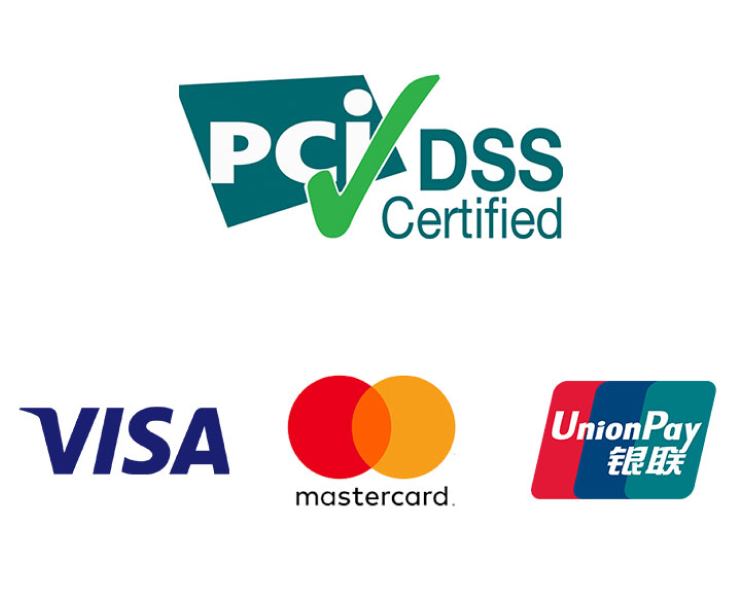
Compliance e Certificazioni
Lorem ipsum dolor sit amet, consectetur adipiscing elit. Risus, massa auctor quis in pretium sit suspendisse faucibus. Nullam a sed mauris sit nibh purus, lorem volutpat. Posuere elementum viverra ipsum faucibus arcu.
Accumsan diam molestie sed cum nisl id metus a. Egestas massa cursus cras enim. Faucibus amet sit dictum amet, nibh. Lacus sit dictumst leo consectetur senectus enim sem malesuada. Faucibus aliquet aliquet euismod quis eget.
Success Stories
Some of our clients
CBIGlobe
IntesaSanpaolo
Nexi
Unipol
Insights
TAS @ EBAday 2023
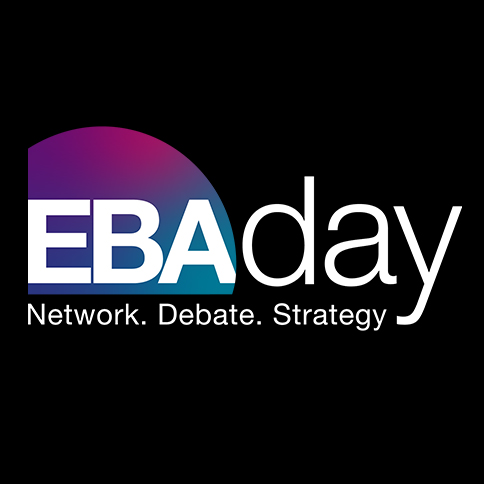
20 – 21 June 2023 | THE IFEMA, MADRID
Advancing next generation payments – a quest for global interoperability
EBAday is coming back to Madrid this year, and we are excited to be among the sponsors of the event once again.
Embedded Insurance: The Future of Seamless Protection for Consumers

Embedded finance is revolutionizing the financial industry, and one of its most significant components is embedded insurance. But what exactly is embedded insurance? How does it work, and why should you care? In this article, we will explore the ins and outs of embedded insurance, from its definition to its benefits and use cases. Whether you’re a fintech entrepreneur or a curious consumer, read on to discover how embedded insurance fits into the larger picture of open finance, PSD2, BaaS (Banking as a Service), and more.
What is embedded insurance
Embedded finance is a relatively new concept that refers to the integration of financial services into non-financial products or services. In other words, it means embedding financial functionalities within other applications and platforms, such as e-commerce websites, social media apps, or even cars. As a result, companies are able to offer their customers more convenient access to a range of financial products and services.
One of the most promising areas where embedded finance has been gaining traction is insurance.
Embedded insurance works by integrating insurance policies into products or services that are not primarily focused on providing insurance. This allows consumers to subscribe insurance policies directly through third-party platforms as part of their purchase journey on an e-commerce website or via their bank account without having to visit an insurer’s website or office physically.
By integrating these two industries together we have facilitated better options for people who need financial security but don’t want any hassle with extra paperwork and applications.
Embedded insurances are available across various industries such as travel, automotive, healthcare and more. For example, when purchasing travel tickets online, it may be possible for customers to add travel insurance coverage at checkout.
Benefits of Embedded Insurance
This innovation provides several advantages for both customers and insurers/business.
From customers’ point of view one of the key benefits is convenience. With traditional insurance, customers have to go through a lengthy process of signing up for policies, submitting claims, and waiting for reimbursements. Embedded insurance simplifies this process by integrating it into existing products and services. Customers can buy an insurance policy with just a few clicks on their digital devices instead of filling out lengthy forms and waiting for approval. This means fewer steps for customers, leading to an increase in conversion rates.
Another benefit is cost-effectiveness. Because embedded insurance is integrated into other products and services, it does not require separate marketing efforts or distribution channels. This can result in lower costs for both insurers and customers and a better customer loyalty. By offering embedded insurance, companies can provide added value to their customers without requiring them to seek out third-party providers. This makes it more likely that they will continue using the company’s products or services in the future.
Embedded insurance creates a more seamless customer experience by providing a one-stop-shop for all financial needs. Customers can manage their finances and protect themselves at the same time, making it easier for them to stay on top of their finances. For example, when purchasing a car or booking travel online, customers can easily add on relevant insurance coverage without having to navigate through separate websites or applications.
For insurers, embedded insurance opens up new revenue streams by tapping into previously untapped customer bases that may have never considered purchasing standalone policies before. Moreover, integrated data analytics mean that companies can collect more information about their clients’ behavior patterns to offer personalized coverage options.
Businesses benefit from embedded insurance by being able to offer additional value-add services that differentiate them from competitors. By offering embedded insurance products or partnering with insurers who do so, companies can improve customer loyalty while increasing revenue streams.
In short, the benefits of embedded insurance extend far beyond convenience – it provides better user experiences; increases customer satisfaction; drives new revenue streams for businesses while reducing exposure risks.
The key aspect of embedded insurance is to anticipate customer needs at the right time by shortening the traditional steps of the customer journey. In this way, we move from a planned purchase model to an impulse one in which consumers do not research and compare the different options available on the market: the goal is to acquire customers before the main transaction (i.e. purchase of a flight ticket) is completed.
Embedded insurance is shaping the future of finance positively. As more industries embrace open finance concepts like BaaS (Banking as a Service), we can expect these integrations to become even more prevalent in our daily lives soon.
Problems and Opportunities related to Embedded Insurance
As with any emerging technology or trend, embedded insurance comes with both challenges and opportunities.
One of the main problems is regulatory compliance. As embedded insurance operates within the framework of PSD2, businesses must navigate a complex set of regulations to ensure they are compliant. This can be time-consuming and costly.
Another problem is customer awareness. Many consumers may not understand what embedded insurance is or how it works, which could make them hesitant to use it. Businesses need to educate their customers about the benefits of this type of insurance so that they feel confident in using it.
However, as with any challenge, there are also opportunities for growth and innovation. With the rise of Baas (Banking-as-a-Service) platforms and Open Finance initiatives, businesses have more access than ever before to integrate new financial services into their products such as loans or payments while offering comprehensive protection through embedding an insurance product like travel medical coverage right where users need it most – during a transaction itself.
Furthermore, through utilizing data analytics technologies combined with IoT devices installed in cars or homes for example, insurers can offer personalized policies based on individual needs instead of blanket coverage plans – thus creating a competitive advantage over traditional insurers who rely solely on manual underwriting processes.
Navigating these challenges will ultimately lead to new innovations that bring greater value to both businesses and consumers alike in today’s fast-paced digital world.
Use cases of Embedded Insurance
The rise of embedded insurance has opened doors to various use cases across industries, providing businesses with innovative ways to monetize and enhance their offerings. One such example is within the travel sector, where booking platforms can now seamlessly offer tailored travel insurance products alongside flight or hotel reservations. Airlines offer travelers coverage for flight delays, cancellations, lost luggage, and other related incidents through an add-on feature during booking or check-in processes, without any additional steps required from you as a customer. By integrating these services directly into the customer journey, clients benefit from a more streamlined experience while companies tap into new revenue streams through commissions earned from selling these integrated policies.
In addition to travel, the automotive industry stands to gain significantly from embedded insurance solutions. As car manufacturers increasingly incorporate advanced technology in their vehicles, offering customized auto insurance policies based on data collected by sensors could provide accurate risk assessment and pricing for customers. This personalized approach offers potential savings for responsible drivers while encouraging safer driving habits overall.
Similarly, within the realm of e-commerce and retail, embedding warranty or protection plans during product checkout can lead to increased conversion rates and added value for customers seeking peace of mind when making purchases online. By simplifying this process through seamless integration with existing point-of-sale systems, merchants create an opportunity for upselling without disrupting the customer experience.
Emerging digital health platforms have shown great promise in leveraging embedded insurance as a way to expand access to healthcare coverage among users globally. With telemedicine growing rapidly worldwide due in part to recent global events – there lies vast potential in offering relevant medical malpractice or cyber liability coverage options directly within these digital platforms themselves.
It’s evident that industries as diverse as finance (BaaS), transportation (PSD2) and healthcare are all incorporating embedded finance—particularly open finance—to maximize opportunities offered by innovations like PSD2 towards delivering greater value-add propositions around essential services such as banking-as-a-service (BaaS) and beyond.
Embedding insurance offers an array of practical applications that companies can integrate into their business models seamlessly. By doing so they provide more value-added services to customers while also reducing administrative overheads associated with traditional insurances schemes.
Conclusion
Embedded insurance is a game-changer for both the insurance and financial industries. It has the potential to revolutionize how people access and use different financial services while providing more convenience, cost-effectiveness, and personalized experiences.
With PSD2 and BaaS opening up opportunities for new entrants in the market, embedded finance will continue to be an exciting area of growth. And as embedded insurance becomes increasingly popular among consumers, we can expect more partnerships between banks, insurers, fintechs, retailers and other players in the ecosystem that offers various services under one roof.
While there are still challenges that need to be addressed such as data privacy issues or regulatory barriers when it comes to offering cross-border solutions. The future looks bright for this emerging trend with many companies exploring ways they can leverage their existing platforms to offer embedded insurance products.
As technology continues evolving rapidly within both industries – we can only imagine where this innovation may take us next.
TAS Global Payment Platform for the Embedded Finance
Several financial institutions choose the TAS Global Payment Platform (GPP) to provide a better payment experience and enable faster time-to-market. The GPP platform is suited to any ecosystem operator between banks, technology providers, and distributors of financial products to guarantee a great and seamless customer experience. We work with businesses in digital banking, BNPL, insurance, travel and payments thanks to a highly configurable platform with open APIs.
Our embedded finance offering comes with scalable and reliable micro-services, flexible workflow configurations and a centralized custom overview that permits companies higher dynamicity.
Contact us to discover how we can help you leverage embedded finance for your use case
Specialization is the key to Open Finance

Fintech user experience, bank specialization. To stay competitive in the open finance ecosystem, banks need to replicate the user experience of fintechs – simple and catered to customers’ individual needs. Therefore, their strategy should focus on specialization, as well as a on streamlined, personalized offer. According to Matteo Bravi, Chief Strategy & Transformation Officer at TAS, « Banks must upgrade their front-end services to deploy those attractive features designed for different customer types that have proven to be successful with fintech. This requires making the most out of available customer data and becoming a partner in customers’ daily decisions and long-term plans by customizing services and expanding offerings beyond traditional banking or insurance domains».
The new customer clusters
Rethinking front ends means keeping in mind that digital channels don’t only belong to the youngest group. In fact, if one looks at profitability, internet and mobile banking must target the most profitable segments such as silver, as well as niche markets with high added value that require specialization. As Bravi explains, «The wealthiest market is composed of seniors, professionals, corporates and small businesses. These markets remain untapped and fintechs, without a banking license, cannot provide loans or salary-backed loans as a financial institution can. They may take away a portion of the market by acting as an Electronic Money Institution (EMI) but they do not have the same opportunities of finance».
The generic offer loses value
Some banks are now concentrating on specific industries in order to create tailored solutions. As an example for tourism, this could include single-use prepaid cards as an alternative to bank transfers for paying travel agencies. The insurance sector has seen the introduction of four-handed bank-insurance agreements linking insurance premiums with credit cards. Today generic payment cards are no longer successful, so it is necessary to find a reason for them to exist – comments Bravi, and offer a personalized service based on a specialized area such as seniors or SMEs.
Personalization: the advantage of data
Specializing in a niche market alone is not enough. In order to compete in the open finance world, banks must also focus on offering personalized and rapid services. Taking advantage of AISP licenses will allow banks to provide account aggregation to customers for a convenient experience; by having all of their financial data in one location, users can more easily manage their accounts and make payments. This feature may be most beneficial to the bank as they gain a better understanding of the customer’s assets and buying behavior that they can then use to better identify impulse purchases. An example would be instant insurance; when an account holder uses their card at the bank’s checkout, the app sends out a notification suggesting the purchase of quick travel cover – adds Bravi. It is true that these are products with a fair margin, but if tailored and integrated with other profitable services, they can certainly increase the perceived value by customers.
Be quick, even in IT
The path towards open finance is clear – the customer should be a top priority in any business strategy. To succeed, banks must specialize in market segments and niches, while using data to create tailored offers. Technology is an essential element in this competitive market, leveraging investments made over the years. « In order to revolutionize user experience as fintechs have done, banks must integrate their existing systems with new technologies. The important thing is to make these systems flexible enough to allow quick innovation» Bravi explains. Every bank has its own unique IT infrastructure, and that’s why it is important for us to find specific solutions to meet their needs while maintaining pre-existing systems, and working on the back and front end with tailor-made proposals».
Author: AziendaBanca by G.C “TAS. La specializzazione è la chiave dell’Open Finance“
English Translation by TAS
TAS @ Sibos 2022
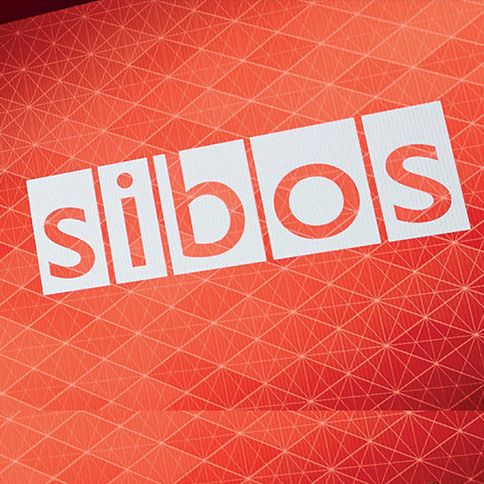
10 – 13 October | RAI, Amsterdam
Sibos is back in-person and TAS is again among the official exhibitors. We can’t wait to meet you in Amsterdam where SWIFT will host a full conference programme and exhibition, along with a wide range of networking events. The agenda will feature business leaders and topic experts from across the financial community and beyond, discussing the most impactful trends in technology, regulation, risks and sustainability. If you can’t make it in person, join Sibos virtually by connecting to the digital conference experience that will extend Sibos to delegates around the world.
Stop by our booth D76 to share insights on the latest trends on digital payments, liquidity management, payment schemes connectivity, open banking and much more.
How PSPs are navigating change in a challenging payments landscape
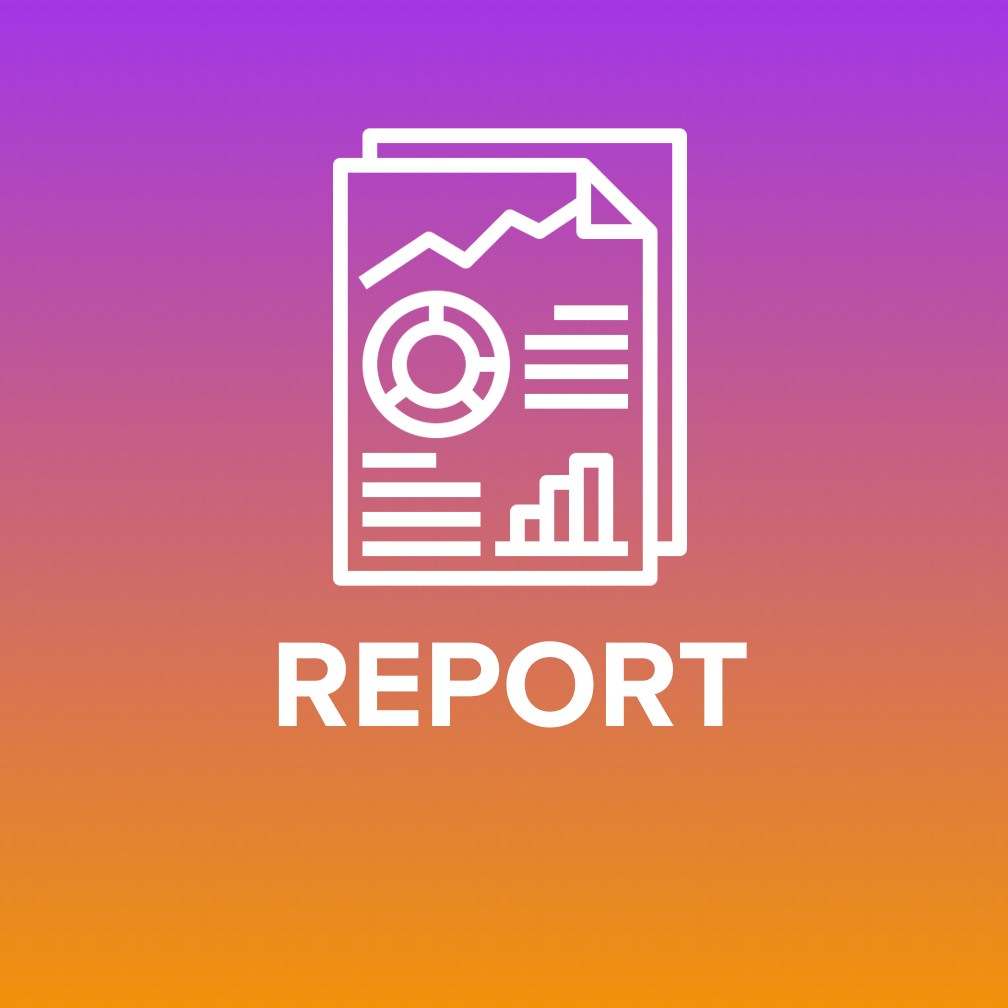
TAS conducted a survey, in partnership with Bobsguide, to learn how PSPs, including Credit Institutions and other Payment organisations around the world, are reacting to the changes and challenges in today’s emerging payments landscape.
The report highlights the themes having a big impact on the payments industry right now: instant payments, ISO 20022, and liquidity management, and contains insights into global technology investment strategies, cloud adoption trends, the main challenges currently seen by the payments community and more.
TAS Spotlight Open Banking

In this video Marco Pozzo, Senior Business Development Global Payments of TAS Group, shares his point of view regarding the changing scenarios and the arising challenges in the Open Banking era…
Embedded Finance and Payments Convergence: not to be underestimated by PSPs

Retail payments have historically belonged to one of two distinct groups: those that are card-based…
Nexi: here’s how we overcame the babel of account statement descriptions
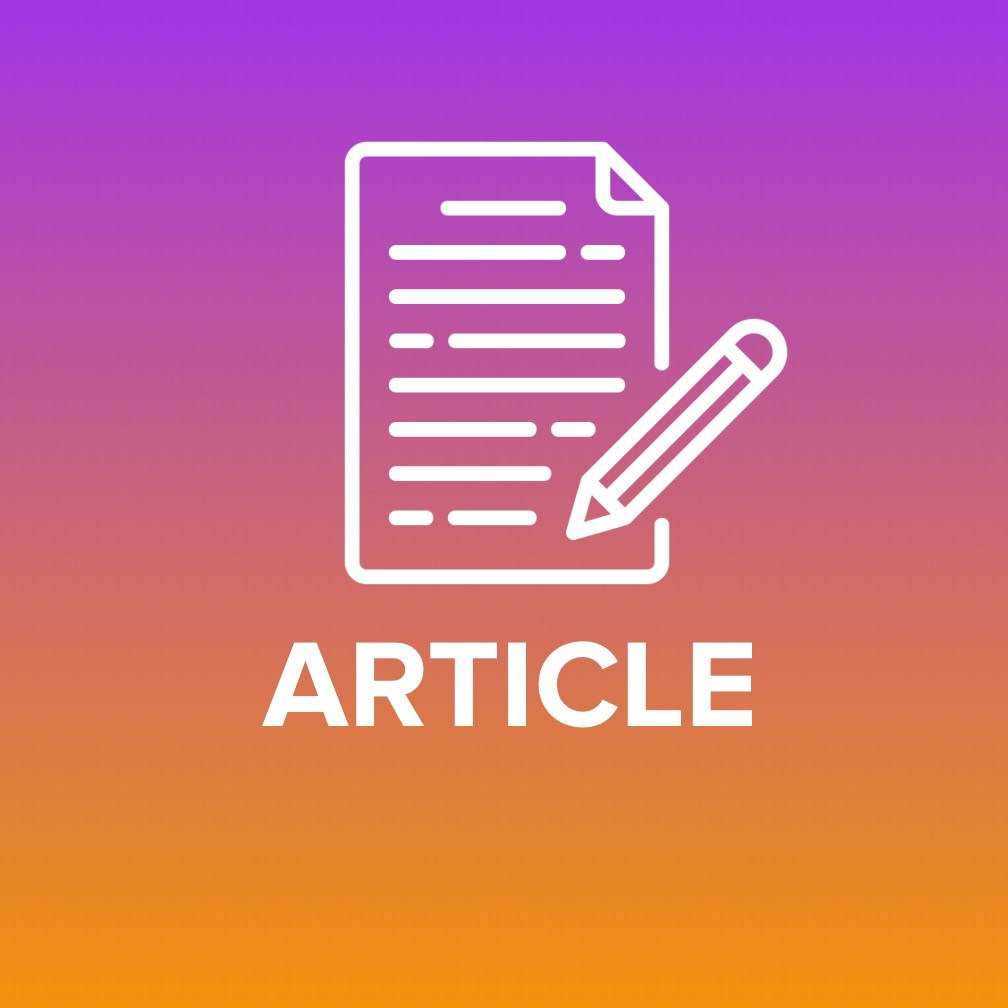
Thanks to the Harmonizer Hub implemented by Mantica (TAS Group), Nexi PayTech has managed to harmonize into a single taxonomy all descriptions used by banks. A goal achieved through the use of Intelligent text mining and Machine learning technologies integrated in Nexi’s Active Gateway. Gianluca Finistauri of Nexi and Amedeo Borin of Mantica explain more about the initiative.
Wages, remunerations, emoluments: three different terminologies for the same identical statement. This is just one example of the wide variety of descriptions that banks use to report the same customer account transaction. An array of definitions that becomes a serious problem in the era of open banking and PSD2. In particular, but not only, for the Account Aggregation and Personal Financial Management (PFM) services, which allow the customer, with his consent, to have a clear vision of his finances at multiple banks, categorizing incomes and expenses with unique accounting definitions.
Nexi has managed to overcome this ambiguity by leveraging Intelligent machine learning and Text mining technologies that are at the basis of the Harmonizer Hub solution created by Mantica, TAS Group’s subsidiary specialized in these technologies.
Let’s unveil some key takeaways arising from the interview with 2 main actors of this successful project: Gianluca Finistauri, Head of Digital Corporate Banking of Nexi and Amedeo Borin, CEO of Mantica-TAS Group.
Reducing the complexity
“Active aggregation services are meant to descale complexity”, explains Finistauri. “But today it is still very hard to interface multiple banks to retrieve customer data, despite the PSD2 mandate acting as a fundamental aspect of open banking. In addition to carrying out the connection to all customer’s banks in a transparent way, Nexi has decided to take a step further and reduce the complexity of interpreting the contents. In fact, every single bank uses descriptions decided independently, as there is no standard in the banking industry for it, making it difficult to interpret them and, consequently, to be able to offer a clear view to the end customer. “We needed an engine capable of interpreting and ordering the collected descriptions, not really those of the large banking groups, with which we already collaborate through the Italian national corporate banking scheme CBI, but particularly those of the other 700 medium-small banks operating in Italy”, explains Finistauri.
This is where Mantica comes into play, offering a solution that is currently unique on the market, capable of bringing the babel of bank dialects back to a shared taxonomy. “By combining Intelligent text mining technology with Machine Learning algorithms, we were able to create an engine, the Harmonizer Hub, which dynamically analyses the enormous daily payment traffic of all banks, reconciling every single entry with a standard dictionary, and learning and improving performance day after day,” says Borin. “An absolutely not simple activity – he continues – because it involves interpreting natural language and analysing and comparing huge amounts of statements. And, moreover, because we had to respond to a new need driven by the PSD2 and therefore unprecedented to refer to. We took the challenge seriously, and quickly developed a system capable of giving very reliable answers that have been integrated by Nexi into its active gateway, which is already operational”.
A solution capable of managing millions of pieces of information
“We chose Mantica’s solution after a careful software selection, which also involved international suppliers, and after a pilot that proved the excellent functioning of the technology on which Harmonizer Hub is based”, recalls Finistauri. A decision that turned out to be a winning one: “Today a customer of any of our banks – continues Finistauri – who has current accounts with multiple institutions that use different terminologies, can see all his expenses correctly classified. And the system is able to dynamically maintain this functionality updated over time, continuing to map every new description potentially introduced by future regulation, learning from the millions of transactions it analyses every day”.
Mapping completed
The Harmonizer Hub is now close to automatically recognizing the totality of bank descriptions. “A great job has been done – Finistauri says satisfied – because at the beginning we were reconciling no more than 20% of the transaction descriptions and already in April we could match about 85% of the terminologies used by banks. Then, week after week, the engine learned to recognize and correctly catalogue more and more descriptions, effectively eliminating the need to intervene manually”.
The customer appreciation in all segments
“As of today, only Nexi offers such a service which is so accurate and continuously updated thanks to machine learning. – proudly underlines Finistauri – The market has immediately perceived the high quality of this new feature and we have received highly positive feedback from both end-customers and third-party operators who offer their PFM service based on our data aggregation. The latter type of customers need to have data already sorted and classified to better carry out their own analyses deep diving into the rest of the details of the statements”.
But a great deal of attention, perhaps even exceeding expectations, came from our corporate customer base, which quickly began requesting it from their banks. “Little is said about it – explains Finistauri – but the PSD2 is also very important for corporates, who are natively multi-bank and have to manage the wide variance of the descriptions from bank to bank. With the Harmonizer Hub we have the ability to connect and harmonize corporate accounts, for example by managing collections through PISPs or feeding corporate treasury solutions for intraday balances. A more sophisticated value proposition compared to the one offered to retail customers, but one that we are able to provide in an equally reliable way”.
Another aspect appreciated by Nexi is the ease with which the new service can be implemented by banks. “From the moment the request arrives – says Finistauri – our banks can activate it in about 4 weeks to their end customers. And this allows us to have a very good time-to-market “.
Ready to learn other languages
The engine created by Mantica is potentially capable of interpreting bank descriptions in other languages as well. Currently it is operational to manage Italian, but for Finistauri the opening to English, French, German etc. represents an obvious evolution considering Nexi’s new international footprint deriving from the acquisitions of Nets and SIA which will lead the PayTech to interconnect with open banking gateways in other countries already by end of this year.
“The system is solid and the textual analysis and machine learning mechanisms have now been fully tested, so it won’t be a problem to expand the linguistic base by retracing the steps taken to implement Italian,” confirms Borin.
Harmonizer Hub, not just for bank descriptions
The versatility of the engine made by Mantica allows its use also in other fields. Nexi is also using it to make some processes more efficient and faster, for example in order to understand whether a balance presented by the customer by a bank is the current Account Balance or the Available Balance. Furthermore, machine learning engines are very useful for customer profiling and to promote personalized offers, obviously always requiring the conscious consent of the customer. “We are starting to work in this direction because the demand from banks to use it as a tool to improve marketing campaigns is very strong”, confirms Finistauri. But the normalization of bank statements and payments is also important for credit scoring and behavioural analysis, helping to improve fraud detection and fraud management, because it makes it faster to intercept and analyze suspicious transactions.
Author: Flavio Padovan– Bancaforte (Italian version)
Source: Nexi: così abbiamo superato la babele delle causali bancarie
Nexi: here’s how we overcame the babel of account statement descriptions
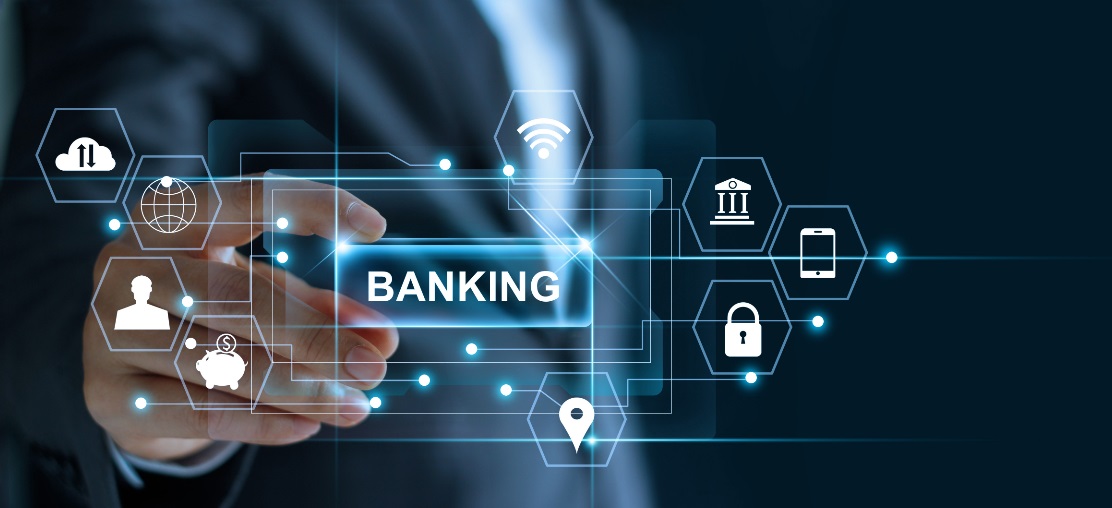
Thanks to the Harmonizer Hub implemented by Mantica (TAS Group), Nexi PayTech has managed to harmonize into a single taxonomy all descriptions used by banks. A goal achieved through the use of Intelligent text mining and Machine learning technologies integrated in Nexi’s Active Gateway. Gianluca Finistauri of Nexi and Amedeo Borin of Mantica explain more about the initiative.

Wages, remunerations, emoluments: three different terminologies for the same identical statement. This is just one example of the wide variety of descriptions that banks use to report the same customer account transaction. An array of definitions that becomes a serious problem in the era of open banking and PSD2. In particular, but not only, for the Account Aggregation and Personal Financial Management (PFM) services, which allow the customer, with his consent, to have a clear vision of his finances at multiple banks, categorizing incomes and expenses with unique accounting definitions.
Nexi has managed to overcome this ambiguity by leveraging Intelligent machine learning and Text mining technologies that are at the basis of the Harmonizer Hub solution created by Mantica, TAS Group’s subsidiary specialized in these technologies.
Let’s unveil some key takeaways arising from the interview with 2 main actors of this successful project: Gianluca Finistauri, Head of Digital Corporate Banking of Nexi and Amedeo Borin, CEO of Mantica-TAS Group.
Reducing the complexity
“Active aggregation services are meant to descale complexity”, explains Finistauri. “But today it is still very hard to interface multiple banks to retrieve customer data, despite the PSD2 mandate acting as a fundamental aspect of open banking. In addition to carrying out the connection to all customer’s banks in a transparent way, Nexi has decided to take a step further and reduce the complexity of interpreting the contents. In fact, every single bank uses descriptions decided independently, as there is no standard in the banking industry for it, making it difficult to interpret them and, consequently, to be able to offer a clear view to the end customer. “We needed an engine capable of interpreting and ordering the collected descriptions, not really those of the large banking groups, with which we already collaborate through the Italian national corporate banking scheme CBI, but particularly those of the other 700 medium-small banks operating in Italy”, explains Finistauri.
This is where Mantica comes into play, offering a solution that is currently unique on the market, capable of bringing the babel of bank dialects back to a shared taxonomy. “By combining Intelligent text mining technology with Machine Learning algorithms, we were able to create an engine, the Harmonizer Hub, which dynamically analyses the enormous daily payment traffic of all banks, reconciling every single entry with a standard dictionary, and learning and improving performance day after day,” says Borin. “An absolutely not simple activity – he continues – because it involves interpreting natural language and analysing and comparing huge amounts of statements. And, moreover, because we had to respond to a new need driven by the PSD2 and therefore unprecedented to refer to. We took the challenge seriously, and quickly developed a system capable of giving very reliable answers that have been integrated by Nexi into its active gateway, which is already operational”.
A solution capable of managing millions of pieces of information
“We chose Mantica’s solution after a careful software selection, which also involved international suppliers, and after a pilot that proved the excellent functioning of the technology on which Harmonizer Hub is based”, recalls Finistauri. A decision that turned out to be a winning one: “Today a customer of any of our banks – continues Finistauri – who has current accounts with multiple institutions that use different terminologies, can see all his expenses correctly classified. And the system is able to dynamically maintain this functionality updated over time, continuing to map every new description potentially introduced by future regulation, learning from the millions of transactions it analyses every day”.
Mapping completed
The Harmonizer Hub is now close to automatically recognizing the totality of bank descriptions. “A great job has been done – Finistauri says satisfied – because at the beginning we were reconciling no more than 20% of the transaction descriptions and already in April we could match about 85% of the terminologies used by banks. Then, week after week, the engine learned to recognize and correctly catalogue more and more descriptions, effectively eliminating the need to intervene manually”.
The customer appreciation in all segments
“As of today, only Nexi offers such a service which is so accurate and continuously updated thanks to machine learning. – proudly underlines Finistauri – The market has immediately perceived the high quality of this new feature and we have received highly positive feedback from both end-customers and third-party operators who offer their PFM service based on our data aggregation. The latter type of customers need to have data already sorted and classified to better carry out their own analyses deep diving into the rest of the details of the statements”.
But a great deal of attention, perhaps even exceeding expectations, came from our corporate customer base, which quickly began requesting it from their banks. “Little is said about it – explains Finistauri – but the PSD2 is also very important for corporates, who are natively multi-bank and have to manage the wide variance of the descriptions from bank to bank. With the Harmonizer Hub we have the ability to connect and harmonize corporate accounts, for example by managing collections through PISPs or feeding corporate treasury solutions for intraday balances. A more sophisticated value proposition compared to the one offered to retail customers, but one that we are able to provide in an equally reliable way”.
Another aspect appreciated by Nexi is the ease with which the new service can be implemented by banks. “From the moment the request arrives – says Finistauri – our banks can activate it in about 4 weeks to their end customers. And this allows us to have a very good time-to-market “.
Ready to learn other languages
The engine created by Mantica is potentially capable of interpreting bank descriptions in other languages as well. Currently it is operational to manage Italian, but for Finistauri the opening to English, French, German etc. represents an obvious evolution considering Nexi’s new international footprint deriving from the acquisitions of Nets and SIA which will lead the PayTech to interconnect with open banking gateways in other countries already by end of this year.
“The system is solid and the textual analysis and machine learning mechanisms have now been fully tested, so it won’t be a problem to expand the linguistic base by retracing the steps taken to implement Italian,” confirms Borin.
Harmonizer Hub, not just for bank descriptions
The versatility of the engine made by Mantica allows its use also in other fields. Nexi is also using it to make some processes more efficient and faster, for example in order to understand whether a balance presented by the customer by a bank is the current Account Balance or the Available Balance. Furthermore, machine learning engines are very useful for customer profiling and to promote personalized offers, obviously always requiring the conscious consent of the customer. “We are starting to work in this direction because the demand from banks to use it as a tool to improve marketing campaigns is very strong”, confirms Finistauri. But the normalization of bank statements and payments is also important for credit scoring and behavioural analysis, helping to improve fraud detection and fraud management, because it makes it faster to intercept and analyze suspicious transactions.
Author: Flavio Padovan– Bancaforte (Italian version)
Source: Nexi: così abbiamo superato la babele delle causali bancarie
PSPs told us how they are dealing with the key changes and challenges being thrust upon them today

We recently surveyed Payment Service Providers from around the world about how they are dealing with today’s volatile payments landscape.
We particularly focused on the hot topics: instant payments, ISO 20022, and liquidity management, all of which are heavily impacting the payments industry, and asked PSPs to reveal what they saw as the main challenges experienced today, how they are rising to these challenges including insights into global technology investment strategies and cloud adoption trends among others.
The survey took place against a backdrop of rapid digitalization, where advancements in technology, regulatory overhauls, the introduction of new initiatives and schemes – not to mention the wide-reaching impact of the pandemic – are having a tumultuous effect in the payments industry – perhaps the greatest experienced in the last decade.
Navigating these changes successfully no doubt involves rethinking existing approaches, business models and systems as well as intelligently leveraging on the many innovative technologies available including, in many cases, adopting a cloud-based strategy.

Also discover related solutions
Contact us
Get in touch to discover how we can help in achieving your business goals



